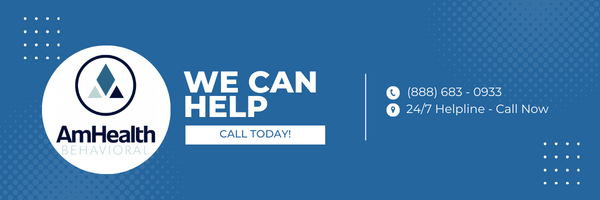
In Ohio, the landscape of dual diagnosis treatment is multifaceted, encompassing a range of modalities aimed at addressing the complex interplay between mental health disorders and substance abuse. The integration of evidence-based practices with individualized care plans is a hallmark of treatment facilities in the state.
However, what sets Ohio's dual diagnosis programs apart is the emphasis on a holistic approach that considers the unique needs of each person. This approach not only addresses the immediate concerns but also focuses on long-term recovery and overall well-being.
Understanding Dual Diagnosis in Ohio
In Ohio, the concept of dual diagnosis refers to the co-occurrence of a substance use disorder and a mental health disorder in an individual. This intertwined relationship between mental health and substance abuse presents a unique challenge in the treatment landscape. Individuals with dual diagnoses often face more complex symptoms, poorer treatment outcomes, and higher rates of relapse compared to those with a single diagnosis.
The prevalence of dual diagnosis in Ohio is significant, with a large portion of individuals seeking treatment for either substance use disorders, mental health disorders, or both. According to data from the Substance Abuse and Mental Health Services Administration (SAMHSA), around 45% of adults with a substance use disorder also have a co-occurring mental health disorder in Ohio. This highlights the importance of integrated treatment approaches that address both aspects simultaneously to improve outcomes for individuals with dual diagnoses in the state.
Comprehensive Treatment Approaches Available
A range of integrated and evidence-based treatment approaches are available to address the complex needs of individuals with dual diagnoses in Ohio. These comprehensive treatment approaches aim to provide holistic care that addresses both mental health and substance use disorders simultaneously. By combining various therapeutic modalities, medication management, and support services, individuals can receive tailored treatment plans that cater to their specific needs.
Below is a table outlining some of the comprehensive treatment approaches available for individuals with dual diagnoses in Ohio:
| Treatment Approach | Description | Benefits |
|---|---|---|
| Integrated Therapy | Simultaneous treatment for mental health and addiction | Addresses both disorders effectively |
| Medication Management | Prescription of medications to manage symptoms | Helps stabilize mood and cravings |
| Behavioral Therapies | Cognitive-behavioral approaches to address behaviors | Develops coping strategies and skills |
| Support Groups | Peer-led groups for encouragement and shared experiences | Provides a sense of community and belonging |
| Family Counseling | Involvement of family members in the treatment process | Enhances family support and understanding |
Importance of Integrated Care Programs
Integrated care programs play a pivotal role in effectively addressing the complex needs of individuals with dual diagnoses in Ohio by providing coordinated and comprehensive treatment approaches. These programs are designed to integrate mental health and substance abuse services, recognizing the interconnected nature of these conditions. By combining psychiatric support, counseling, medication management, and addiction treatment within a single program, integrated care ensures that individuals receive holistic and personalized care that considers all aspects of their well-being.
One of the key benefits of integrated care programs is the close collaboration between different healthcare professionals, including psychiatrists, psychologists, social workers, and addiction specialists. This multidisciplinary approach allows for a more thorough assessment of the individual's needs and enables the development of a tailored treatment plan that addresses both mental health and substance abuse issues simultaneously.
Additionally, integrated care programs prioritize continuity of care, ensuring that individuals receive consistent support and monitoring throughout their recovery journey. This ongoing assistance helps to prevent relapses, promote long-term recovery, and improve the overall quality of life for individuals with dual diagnoses in Ohio.
Finding the Right Dual Diagnosis Facility
Effective treatment outcomes for individuals with dual diagnoses in Ohio heavily depend on the selection of an appropriate dual diagnosis facility that meets their specific needs and provides comprehensive care. When searching for the right dual diagnosis facility, consider the following key factors:
- Integrated Treatment Approach: Look for facilities that offer integrated treatment for both mental health and substance use disorders simultaneously, ensuring a holistic approach to recovery.
- Qualified Staff: Choose a facility with a multidisciplinary team of professionals, including psychiatrists, psychologists, social workers, and addiction specialists, to provide specialized care tailored to individual needs.
- Evidence-Based Practices: Opt for facilities that utilize evidence-based therapies and treatment modalities proven effective in addressing dual diagnoses, such as cognitive-behavioral therapy (CBT) and medication-assisted treatment (MAT).
- Aftercare Support: Seek facilities that offer robust aftercare support programs to help individuals transition back into their daily lives post-treatment and maintain long-term recovery success.
Success Stories: Overcoming Dual Diagnosis
Exploring the real-life experiences of individuals navigating dual diagnoses provides valuable insights into the challenges and triumphs associated with overcoming co-occurring mental health and substance use disorders in Ohio. Success stories of individuals who have conquered dual diagnosis serve as beacons of hope and inspiration for others facing similar struggles. These narratives highlight the complexities of managing both mental health issues and substance abuse while showcasing the resilience and determination required to achieve recovery.
One such success story is that of a 35-year-old Ohio resident who battled depression and alcohol addiction for years. Through a comprehensive dual diagnosis treatment program in Ohio, this individual received integrated care that addressed both the underlying mental health issues and substance use disorder. With the support of qualified professionals and a strong peer network, the individual was able to achieve sobriety and manage their mental health effectively. Today, they serve as a testament to the fact that recovery from dual diagnosis is possible with the right treatment approach and a commitment to personal growth and healing.






